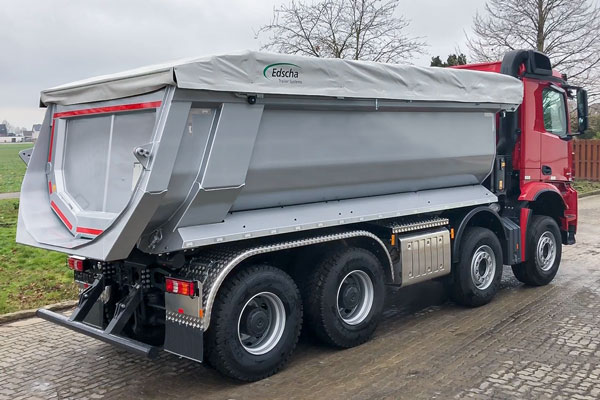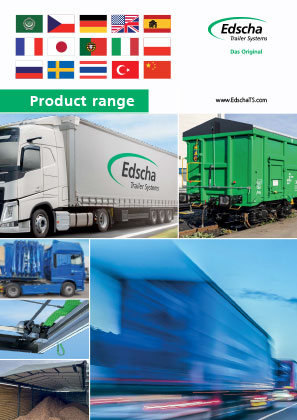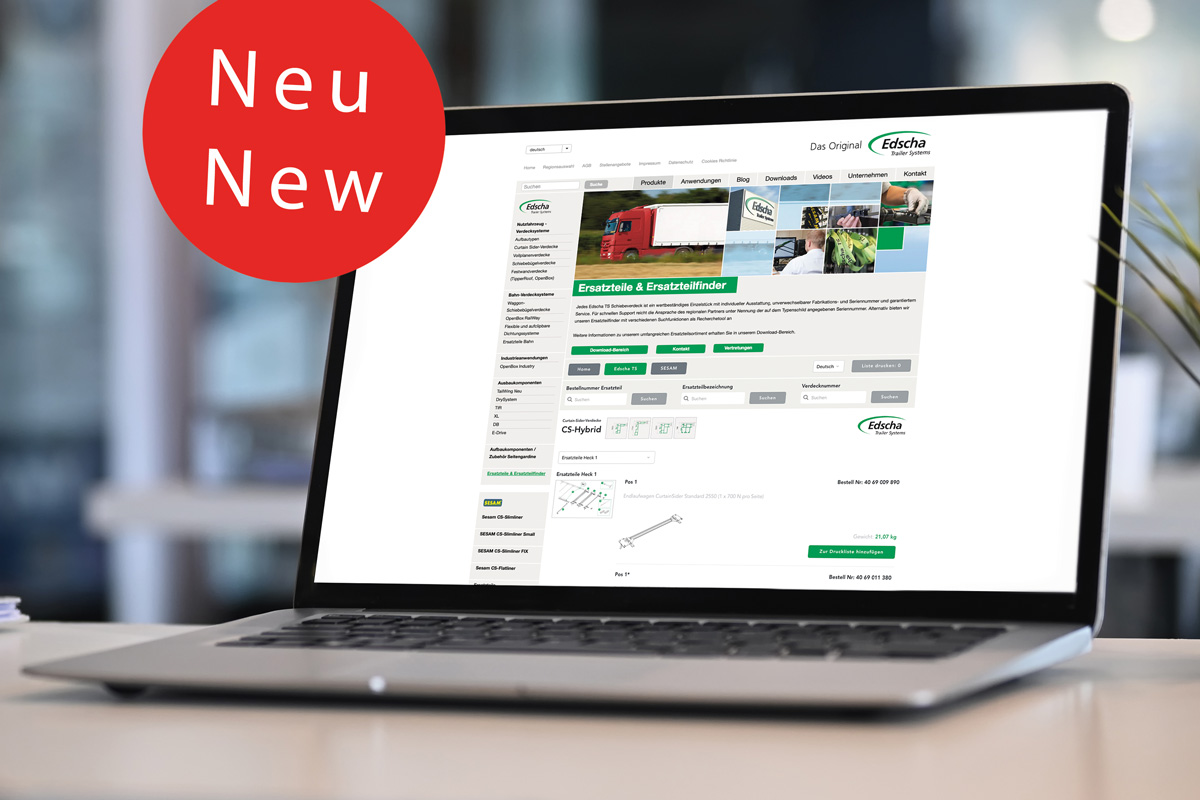Many a name explains itself
Under the name "TipperRoof", for example, Edscha TS is presenting an innovative dump truck roof system based on the company's well-known sliding roof concept, which has been transferred to modern dump trucks. But what does the name want to tell us? Quite simply "TipperRoof" is made up of the English "Tipper" = dump truck and "Roof" = roof/cover).
A tipper remains a tipper... Even without a tipper body
In Great Britain, the tipper is first and foremost a smoked fish speciality made from herring. Large filleted and pre-salted pieces are plated with skin and without head and are cold smoked. At that time Kipper was certainly hungry for it. Kipper was the name given to a worker in a quarry who hammered rock blocks into small stones, which were mainly used as paving stones in road construction.
Well, and then of course there are the tippers on wheels. In principle, these are carrier vehicles on which a so-called tipper body is mounted. The tipper bridge can be used to control a loading area and - precisely - tilt it. The range of tipper vehicles built today is enormous. They are primarily used in the construction and agricultural sectors. Dump trucks are generally used for transporting bulk material or asphalt. These either have fixed bodies or mobile trailers for high flexibility.
The term dump truck in construction vehicles is actually derived from the fact that they look like a floor dump (skip). Very much in the past a trough was also a "milking barrel" (mhd. mulde, ahd. muolt(e)ra; the term is a borrowing from lat. mulctra "milking barrel", from lat. mulgere "to milk".

When there was still fuel from coal
Only a few people know fuel from coal. The name of the mineral oil brand ARAL, for example, contains a piece of this history. In 1898, the "Westdeutsche Benzol-Verkaufsvereinigung" was founded in Bochum to market benzene, a by-product of mining. In 1924, the Benzene Association developed a gasoline-benzene mixture with a mixing ratio "of six parts gasoline and four parts benzene" as gasoline. As benzene belongs to the chemical group of ARomatics and petrol to the ALiphatics, the new fuel was named Aral.
Ever driven a tautliner?
The tautliner, also known as a curtainsider, is a body form of a truck, semi-trailer or trailer with a tarpaulin on the side, and is used in road haulage. The term is composed of the English words taut for "tight" or "taut" and liner in the broadest sense for "means of transport". The German term is, among other things, Schiebeplanenauflieger or curtain tarp semitrailer. A tautliner is not equipped with side walls, but - from a certain length - with vertical, removable stanchions and horizontal support slats inserted in receptacles and on the outside with a side tarpaulin (side guard) on the left and right. The sliding tarpaulins can actually be pulled up like a curtain.
The Edscha structure
Anyone who talks about modern convertible top solutions uses "Edscha" as an industry-specific synonym. Behind this is the invention of the modern sliding top patented in 1969 by the Remscheid-based company Edscha. The term goes back to the company founder Eduard Scharwächter, from whose name the term Edscha was derived.
Today the Edscha body is practically a standard for modern convertible top solutions. It is understood to be a special body form for trailers and semi-trailers which are pulled by trucks. With some Edscha soft-top bodies the roof can be moved to one or both sides. It folds up like an accordion. This allows the trailer to be loaded and unloaded from above. This is particularly practical for goods that are difficult to move or bulky - such as machines or long goods - such as steel beams. With the help of a crane, they are simply loaded onto the loading area from above. This is less time-consuming than loading with forklifts and saves time. All this is achieved by patented kinematics. The soft tops are easy to move, require little maintenance and prove to be extremely robust in tough everyday practice.
Another quick and safe solution for loading and unloading from the truck side is the development of the Edscha side curtain rollers. The very smooth-running tarpaulin rollers enable safe and convenient moving of the tarpaulins when loading and unloading from the truck side. In the event of defects, individual rollers can also be replaced quickly and easily. This makes Edscha side tarpaulin rollers a very economical solution.
Today, modern Edscha tarpaulin systems are developed and marketed by Edscha TS with headquarters in Moers. Incidentally, the TS stands for the term "trailer systems".






